197 results found for 'Science'. Prev |1|2|3|4|5|6|7|8 | Next | View 100 per page
Low relevance matches: 10 other results may be of interest to you. Show low relevance matches
DNA - The transmission of heritable characteristics from one generation to the next involves DNA and genes ACSSU185 Year 10 Biological Sciences
Evolution - The theory of evolution by natural selection explains the diversity of living things and is supported by a range of scientific evidence ACSSU004 Foundation Earth and Space Sciences
Weather and Climate - Daily and seasonal changes in our environment, including the weather, affect everyday life ACSSU002 Foundation Biological Sciences
Living Things - Living things have basic needs, including food and water ACSSU005 Foundation Physical Sciences
Forces and Moving - The way objects move depends on a variety of factors including their size and shape ACSSU017 Year 1 Biological Sciences
Living Things - Living things have a variety of external features ACSSU019 Year 1 Earth and Space Sciences
Weather and Climate - Observable changes occur in the sky and landscape ACSSU020 Year 1 Physical Sciences
Light and Sound - Light and sound are produced by a range of sources and can be sensed ACSSU030 Year 2 Biological Sciences
Life Cycles - Living things grow, change and have offspring similar to themselves ACSSU031 Year 2 Chemical Sciences
Materials - Different materials can be combined, including by mixing, for a particular purpose ACSSU032 Year 2 Earth and Space Sciences
Water - Earth’s resources, including water, are used in a variety of ways ACSSU033 Year 2 Physical Sciences
Forces and Moving - A push or a pull affects how an object moves or changes shape ACSSU043 Year 5 Biological Sciences
Adaptations - Living things have structural features and adaptations that help them to survive in their environment ACSSU044 Year 3 Biological Sciences
Living Things - Living things can be grouped on the basis of observable features and can be distinguished from nonliving ACSSU046 Year 3 Chemical Sciences
Solids Liquids Gases - A change of state between solid and liquid can be caused by adding or removing heat ACSSU048 Year 3 Earth and Space Sciences
Earth Moon Sun - Earth’s rotation on its axis causes regular changes, including night and day ACSSU049 Year 3 Physical Sciences
Heat - Heat can be produced in many ways and can move from one object to another ACSSU072 Year 4 Physical Sciences
Life Cycles - Living things have life cycles ACSSU073 Year 4 Biological Sciences
Animal Survival - Living things, including plants and animals, depend on each other and the environment to survive ACSSU074 Year 4 Chemical Sciences
Materials - Natural and processed materials have a range of physical properties; These properties can influence their use ACSSU075 Year 4 Earth and Space Sciences
Earth Changes - Sudden geological changes or extreme weather conditions can affect Earth’s surface ACSSU076 Year 4 Physical Sciences
Forces and Moving - Forces can be exerted by one object on another through direct contact or from a distance ACSSU077 Year 5 Chemical Sciences
Solids Liquids Gases - Solids, liquids and gases have different observable properties and behave in different ways ACSSU078 Year 5 Earth and Space Sciences
Earth Moon Sun - The Earth is part of a system of planets orbiting around a star (the sun) ACSSU080 Year 5 Physical Sciences
Light and Sound - Light from a source forms shadows and can be absorbed, reflected and refracted ACSSU094 Year 6 Biological Sciences
Adaptations - The growth and survival of living things are affected by the physical conditions of their environment ACSSU095 Year 6 Chemical Sciences
Chemical Changes - Changes to materials can be reversible, such as melting, freezing, evaporating; or irreversible, such as burning and rusting ACSSU096 Year 6 Earth and Space Sciences
Earth Changes - Sudden geological changes or extreme weather conditions can affect Earth’s surface ACSSU097 Year 6 Physical Sciences
Electrical Circuits - Electrical energy can be transferred and transformed in electrical circuits and can be generated from a range of sources ACSSU111 Year 7 Biological Sciences
Classification - Classification helps organise the diverse group of organisms ACSSU112 Year 7 Biological Sciences
Food webs - Interactions between organisms, including the effects of human activities can be represented by food chains and food webs ACSSU113 Year 7 Chemical Sciences
Separating Mixtures - Mixtures, including solutions, contain a combination of pure substances that can be separated using a range of techniques ACSSU115 Year 7 Earth and Space Sciences
Earth Moon Sun - Predictable phenomena on Earth, including seasons and eclipses, are caused by the relative positions of the sun, Earth and the moon ACSSU116 Year 7 Earth and Space Sciences
Earth Resources - Some of Earth’s resources are renewable, but others are non renewable ACSSU117 Year 7 Physical Sciences
Forces and Machines - Change to an object’s motion is caused by unbalanced forces, including Earth’s gravitational attraction, acting on the object ACSSU149 Year 8 Biological Sciences
Cells - Cells are the basic units of living things and have specialised structures and functions ACSSU150 Year 8 Biological Sciences
Organ Systems - Multi-cellular organisms contain systems of organs that carry out specialised functions that enable them to survive and reproduce ACSSU151 Year 8 Chemical Sciences
Matter and Particles - The properties of the different states of matter can be explained in terms of the motion and arrangement of particles ACSSU152 Year 8 Chemical Sciences
Matter and Particles - Differences between elements, compounds and mixtures can be described at a particle level ACSSU153 Year 8 Earth and Space Sciences
Rocks and Minerals - Sedimentary, igneous and metamorphic rocks contain minerals and are formed by processes that occur within Earth over a variety of timescales ACSSU155 Year 8 Physical Sciences
Energy Forms - Energy appears in different forms, including movement (kinetic energy), heat and potential energy, and energy transformations and transfers cause change within systems ACSSU175 Year 9 Biological Sciences
Organ Systems - Multi-cellular organisms rely on coordinated and interdependent internal systems to respond to changes to their environment ACSSU176 Year 9 Biological Sciences
Ecology - Ecosystems consist of communities of interdependent organisms and abiotic components of the environment; matter and energy flow through these systems ACSSU177 Year 9 Chemical Sciences
Atomic Models - All matter is made of atoms which are composed of protons, neutrons and electrons; natural radioactivity arises from the decay of nuclei in atoms ACSSU178 Year 9 Chemical Sciences
Chemical Reactions - Chemical reactions involve rearranging atoms to form new substances; during a chemical reaction mass is not created or destroyed ACSSU179 Year 9 Chemical Sciences
Chemical Reactions - Chemical reactions, including combustion and the reactions of acids, are important in both non-living and living systems and involve energy transfer ACSSU225 Year 8 Chemical Sciences
Chemical Reactions - Chemical change involves substances reacting to form new substances ACSSU180 Year 9 Earth and Space Sciences
Plate Tectonics - The theory of plate tectonics explains global patterns of geological activity and continental movement ACSSU182 Year 9 Physical Sciences
Energy Transfer - Energy transfer through different mediums can be explained using wave and particle models ACSSU186 Year 10 Chemical Sciences
Periodic table - The atomic structure and properties of elements are used to organise them in the Periodic Table ACSSU187 Year 10 Chemical Sciences
Chemical Reactions - Different types of chemical reactions are used to produce a range of products and can occur at different rates ACSSU188 Year 10 Earth and Space Sciences
Universe - The universe contains features including galaxies, stars and solar systems and the Big Bang theory can be used to explain the origin the universe ACSSU189 Year 10 Earth and Space Sciences
Global Systems - Global systems, including the carbon cycle, rely on interactions involving the biosphere, lithosphere, hydrosphere and atmosphere ACSSU190 Year 10 Physical Sciences
Energy Conservation - Energy conservation in a system can be explained by describing energy transfers and transformations ACSSU211 Year 1 Biological Sciences
Animal Survival - Living things live in different places where their needs are met ACSSU219 Year 6 Physical Sciences
Alternative Energies - Energy from a variety of sources can be used to generate electricity ACSSU229 Year 10 Physical Sciences
Forces and Motion - The motion of objects can be described and predicted using the laws of physics
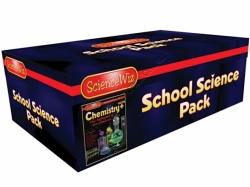

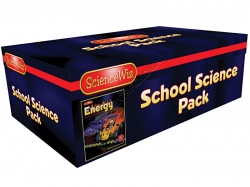
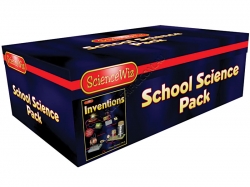



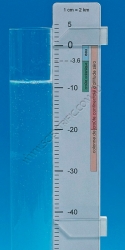
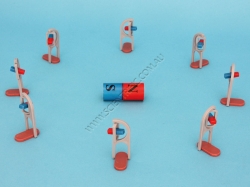
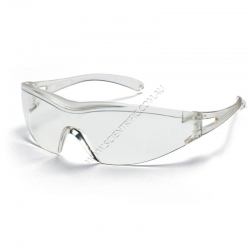
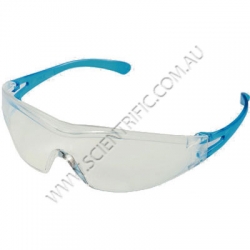

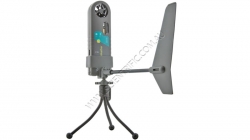

197 results found for 'Science'. Prev |1|2|3|4|5|6|7|8 | Next | View 100 per page
Low relevance matches: 10 other results may be of interest to you. Show low relevance matches
Curriculum resources related to 'Science'
ACSSU184 Year 10 Biological SciencesDNA - The transmission of heritable characteristics from one generation to the next involves DNA and genes ACSSU185 Year 10 Biological Sciences
Evolution - The theory of evolution by natural selection explains the diversity of living things and is supported by a range of scientific evidence ACSSU004 Foundation Earth and Space Sciences
Weather and Climate - Daily and seasonal changes in our environment, including the weather, affect everyday life ACSSU002 Foundation Biological Sciences
Living Things - Living things have basic needs, including food and water ACSSU005 Foundation Physical Sciences
Forces and Moving - The way objects move depends on a variety of factors including their size and shape ACSSU017 Year 1 Biological Sciences
Living Things - Living things have a variety of external features ACSSU019 Year 1 Earth and Space Sciences
Weather and Climate - Observable changes occur in the sky and landscape ACSSU020 Year 1 Physical Sciences
Light and Sound - Light and sound are produced by a range of sources and can be sensed ACSSU030 Year 2 Biological Sciences
Life Cycles - Living things grow, change and have offspring similar to themselves ACSSU031 Year 2 Chemical Sciences
Materials - Different materials can be combined, including by mixing, for a particular purpose ACSSU032 Year 2 Earth and Space Sciences
Water - Earth’s resources, including water, are used in a variety of ways ACSSU033 Year 2 Physical Sciences
Forces and Moving - A push or a pull affects how an object moves or changes shape ACSSU043 Year 5 Biological Sciences
Adaptations - Living things have structural features and adaptations that help them to survive in their environment ACSSU044 Year 3 Biological Sciences
Living Things - Living things can be grouped on the basis of observable features and can be distinguished from nonliving ACSSU046 Year 3 Chemical Sciences
Solids Liquids Gases - A change of state between solid and liquid can be caused by adding or removing heat ACSSU048 Year 3 Earth and Space Sciences
Earth Moon Sun - Earth’s rotation on its axis causes regular changes, including night and day ACSSU049 Year 3 Physical Sciences
Heat - Heat can be produced in many ways and can move from one object to another ACSSU072 Year 4 Physical Sciences
Life Cycles - Living things have life cycles ACSSU073 Year 4 Biological Sciences
Animal Survival - Living things, including plants and animals, depend on each other and the environment to survive ACSSU074 Year 4 Chemical Sciences
Materials - Natural and processed materials have a range of physical properties; These properties can influence their use ACSSU075 Year 4 Earth and Space Sciences
Earth Changes - Sudden geological changes or extreme weather conditions can affect Earth’s surface ACSSU076 Year 4 Physical Sciences
Forces and Moving - Forces can be exerted by one object on another through direct contact or from a distance ACSSU077 Year 5 Chemical Sciences
Solids Liquids Gases - Solids, liquids and gases have different observable properties and behave in different ways ACSSU078 Year 5 Earth and Space Sciences
Earth Moon Sun - The Earth is part of a system of planets orbiting around a star (the sun) ACSSU080 Year 5 Physical Sciences
Light and Sound - Light from a source forms shadows and can be absorbed, reflected and refracted ACSSU094 Year 6 Biological Sciences
Adaptations - The growth and survival of living things are affected by the physical conditions of their environment ACSSU095 Year 6 Chemical Sciences
Chemical Changes - Changes to materials can be reversible, such as melting, freezing, evaporating; or irreversible, such as burning and rusting ACSSU096 Year 6 Earth and Space Sciences
Earth Changes - Sudden geological changes or extreme weather conditions can affect Earth’s surface ACSSU097 Year 6 Physical Sciences
Electrical Circuits - Electrical energy can be transferred and transformed in electrical circuits and can be generated from a range of sources ACSSU111 Year 7 Biological Sciences
Classification - Classification helps organise the diverse group of organisms ACSSU112 Year 7 Biological Sciences
Food webs - Interactions between organisms, including the effects of human activities can be represented by food chains and food webs ACSSU113 Year 7 Chemical Sciences
Separating Mixtures - Mixtures, including solutions, contain a combination of pure substances that can be separated using a range of techniques ACSSU115 Year 7 Earth and Space Sciences
Earth Moon Sun - Predictable phenomena on Earth, including seasons and eclipses, are caused by the relative positions of the sun, Earth and the moon ACSSU116 Year 7 Earth and Space Sciences
Earth Resources - Some of Earth’s resources are renewable, but others are non renewable ACSSU117 Year 7 Physical Sciences
Forces and Machines - Change to an object’s motion is caused by unbalanced forces, including Earth’s gravitational attraction, acting on the object ACSSU149 Year 8 Biological Sciences
Cells - Cells are the basic units of living things and have specialised structures and functions ACSSU150 Year 8 Biological Sciences
Organ Systems - Multi-cellular organisms contain systems of organs that carry out specialised functions that enable them to survive and reproduce ACSSU151 Year 8 Chemical Sciences
Matter and Particles - The properties of the different states of matter can be explained in terms of the motion and arrangement of particles ACSSU152 Year 8 Chemical Sciences
Matter and Particles - Differences between elements, compounds and mixtures can be described at a particle level ACSSU153 Year 8 Earth and Space Sciences
Rocks and Minerals - Sedimentary, igneous and metamorphic rocks contain minerals and are formed by processes that occur within Earth over a variety of timescales ACSSU155 Year 8 Physical Sciences
Energy Forms - Energy appears in different forms, including movement (kinetic energy), heat and potential energy, and energy transformations and transfers cause change within systems ACSSU175 Year 9 Biological Sciences
Organ Systems - Multi-cellular organisms rely on coordinated and interdependent internal systems to respond to changes to their environment ACSSU176 Year 9 Biological Sciences
Ecology - Ecosystems consist of communities of interdependent organisms and abiotic components of the environment; matter and energy flow through these systems ACSSU177 Year 9 Chemical Sciences
Atomic Models - All matter is made of atoms which are composed of protons, neutrons and electrons; natural radioactivity arises from the decay of nuclei in atoms ACSSU178 Year 9 Chemical Sciences
Chemical Reactions - Chemical reactions involve rearranging atoms to form new substances; during a chemical reaction mass is not created or destroyed ACSSU179 Year 9 Chemical Sciences
Chemical Reactions - Chemical reactions, including combustion and the reactions of acids, are important in both non-living and living systems and involve energy transfer ACSSU225 Year 8 Chemical Sciences
Chemical Reactions - Chemical change involves substances reacting to form new substances ACSSU180 Year 9 Earth and Space Sciences
Plate Tectonics - The theory of plate tectonics explains global patterns of geological activity and continental movement ACSSU182 Year 9 Physical Sciences
Energy Transfer - Energy transfer through different mediums can be explained using wave and particle models ACSSU186 Year 10 Chemical Sciences
Periodic table - The atomic structure and properties of elements are used to organise them in the Periodic Table ACSSU187 Year 10 Chemical Sciences
Chemical Reactions - Different types of chemical reactions are used to produce a range of products and can occur at different rates ACSSU188 Year 10 Earth and Space Sciences
Universe - The universe contains features including galaxies, stars and solar systems and the Big Bang theory can be used to explain the origin the universe ACSSU189 Year 10 Earth and Space Sciences
Global Systems - Global systems, including the carbon cycle, rely on interactions involving the biosphere, lithosphere, hydrosphere and atmosphere ACSSU190 Year 10 Physical Sciences
Energy Conservation - Energy conservation in a system can be explained by describing energy transfers and transformations ACSSU211 Year 1 Biological Sciences
Animal Survival - Living things live in different places where their needs are met ACSSU219 Year 6 Physical Sciences
Alternative Energies - Energy from a variety of sources can be used to generate electricity ACSSU229 Year 10 Physical Sciences
Forces and Motion - The motion of objects can be described and predicted using the laws of physics
Products related to 'Science'

ScienceWiz Teacher 6 Pack Chemistry Plus
An exciting set of selected experiments designed to make elements elementary and explore the periodicity of the periodic table. Learn about atoms and the stuff they are made of: protons, neutrons and electrons. The beautifully illustrated book and materials kit takes students thr...
Order code: SCW9910


ScienceWiz Chemistry Plus Kit Sample
An exciting set of selected experiments designed to make elements elementary and explore the periodicity of the periodic table. Learn about atoms and the stuff they are made of: protons, neutrons and electrons. The beautifully illustrated book and materials kit takes students thr...
Order code: SCW9910-S



ScienceWiz Teacher 6 Pack Physics
This ScienceWiz™ kit introduces the concepts of inertia, the laws of motion, mass, force and weight, velocity and acceleration, circular motion and centripetal force. Concepts are explored with time tested experiments and highly visual illustrations.
This Teacher's Pack inc...
Order code: SCW9912


ScienceWiz Physics Kit Sample
This ScienceWiz™ kit introduces the concepts of inertia, the laws of motion, mass, force and weight, velocity and acceleration, circular motion and centripetal force. Concepts are explored with time tested experiments and highly visual illustrations.
This sample kit include...
Order code: SCW9912-S



ScienceWiz Teacher 6 Pack Energy
Discover what energy is, how we make it now and the choices awaiting us in the future. Learn about carbon emissions and climate change. This ScienceWiz™ Teacher's Pack includes enough equipment for 6 students to explore and develop a fundamental understanding of the key concep...
Order code: SCW9905


ScienceWiz Energy Kit Sample
Discover what energy is, how we make it now and the choices awaiting us in the future. Learn about carbon emissions and climate change. This ScienceWiz™ kit enables a student to explore and develop a fundamental understanding of the key concepts of energy while building a foun...
Order code: SCW9905-S



ScienceWiz Teacher 6 Pack Inventions
The ScienceWiz™ Inventions kit allows students to build models of inventions made with coils from the 19th and early 20th century to explore basic electronic components and the fundamentals of electromagnetism. Step-by-step 3D directions and the use of everyday materials bring...
Order code: SCW9903


ScienceWiz Inventions Kit Sample
The ScienceWiz™ Inventions kit allows students to build models of inventions made with coils from the 19th and early 20th century and to explore basic electronic components and the fundamentals of electromagnetism. Step-by-step 3D directions and the use of everyday materials b...
Order code: SCW9903-S



ScienceWiz Chess: Once a Pawn a Time
Want your students to love chess as well as master it?
In ScienceWiz Chess: Once A Pawn A Time™ author and teacher Patzi Stewart takes a beginner through the fundamentals of playing chess in a new and engaging way.
Instructional Storybook One begins with a whimsical intr...
Order code: SCW7851

ScienceWiz Pohaku Dominos
A three colour, four sided domino game with only one rule -- match the colours.
Four game variations keep play interesting for young and old alike. And also challenge those who find maths intriguing.
Pohaku™ Dominos can be played with pieces hidden as a game of chance ...
Order code: SCW7852

Sciencéthic Berlese Funnel
SCIENCÉTHIC BERLESE FUNNEL
The Berlese funnel – sometimes known as a Tullgren funnel – is a device for extracting insects and other micro fauna from soil samples. The soil sample is placed in the funnel and a powerful electric lamp (not supplied) heats the soil. Insects e...
Order code: 024 013
Sciencéthic Microphones
SCIENCÉTHIC MICROPHONES
Two piezoelectric sensors protected by a metallic body are linked to a 3.5mm stereo jack plug. The microphones can be connected to the audio output of the computer sound card.
For use with Sciencéthic Seismic Forces and Fault Model (Order Code 0...
Order code: 032 011

Sciencéthic Isostasy Model
SCIENCÉTHIC ISOSTASY MODEL
This analogical model shows how tectonic plates are “floating” on the asthenosphere and enables students to study isostasy phenomenon. It includes a vertical tube that can be filled with a safe and easy to clean water gel that has a density clos...
Order code: 032 017
Sciencéthic Water Gel for Isostasy Model
SCIENCÉTHIC WATER GEL
Water gel for the Sciencethic Isostasy Model (Order Code 032 017).
The gel is to be mixed with water and makes enough water gel to fill two tubes.
Density ≈ 1 (98% of water)
Order code: 911 075

Sciencéthic 3D Compass - Set of 10
SCIENCÉTHIC 3D COMPASS SET
This set of 10 3D compasses can be hand-held or mounted on a flat surface to show a magnetic field in three directions.
Sold as a box of 10.
Note: The pictured magnet is not included.
KEY AUSTRALIAN EXPERIMENTS
Physics:
• ...
Order code: 999 010
ScienceWiz Motor
Spare motor for the ScienceWiz™ Electricity kit, Energy kit and Inventions kit.
Order code: SCW9226



Safety Glasses UVEX X-One Clear Arms
UVEX X-ONE SAFETY GLASSES WITH CLEAR ARMS
Quality German manufactured Uvex safety glasses that feature hard coat, scratch and chemical resistant lenses. Similar to SC4962 except the stylish slimline wrap around arms are clear.
These safety glasses are AS1337 compliant....
Order code: SC4960
| Purchase QTY: (Each) | 1+ |
|---|---|
| Scientrific's price | $8.80 |
| CLICK FOR QTY PRICING | |
| Prices exclude GST and freight | |

Safety Glasses UVEX X-One Blue Arms
UVEX X-ONE SAFETY GLASSES WITH BLUE ARMS
German manufactured Uvex safety glasses that feature hard coat, scratch and chemical resistant lenses. The stylish slimline wrap around blue arms are popular with students.
These safety glasses are AS1337 compliant. It is import...
Order code: SC4962
| Purchase QTY: (Each) | 1+ |
|---|---|
| Scientrific's price | $10.00 |
| CLICK FOR QTY PRICING | |
| Prices exclude GST and freight | |

Vernier Go Direct Weather Sensor
VERNIER GO DIRECT WEATHER SENSOR ONLY
Easily monitor a wide variety of environmental factors with just one sensor.
The wireless handheld Vernier Go Direct Weather Sensor measures:
• Wind Speed
• Wind Chill
• Temperature
• Heat Index
• Dew Point
• Relative Humidity
...
Order code: GDX-WTHR

Vernier Go Direct Weather System
VERNIER GO DIRECT WEATHER SYSTEM
Vernier's Go Direct Weather System includes an affordable, wireless handheld sensor used to easily monitor a wide variety of environmental factors and a Vernier Go Direct Weather Vane accessory required to report wind direction.
The Weath...
Order code: GDX-WTVA

Vernier Go Direct Pyranometer
VERNIER GO DIRECT PYRANOMETER
Vernier's Go Direct Pyranometer measures the power of electromagnetic radiation in watts per square meter and is great for experiments with solar cells and calculating their efficiency.
It is sensitive to near infrared, visible and UV rad...
Order code: GDX-PYR
197 results found for 'Science'. Prev |1|2|3|4|5|6|7|8 | Next | View 100 per page


